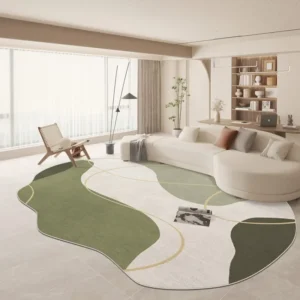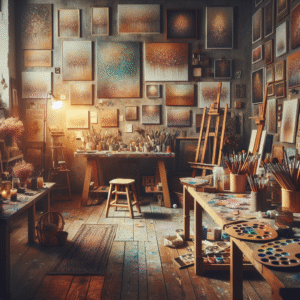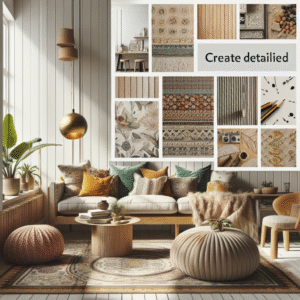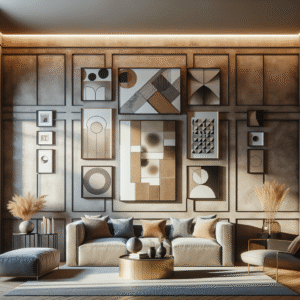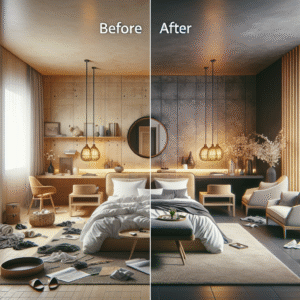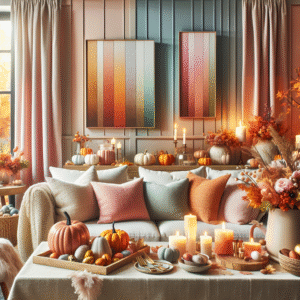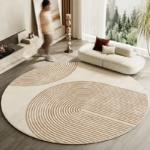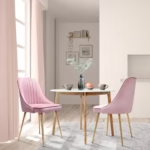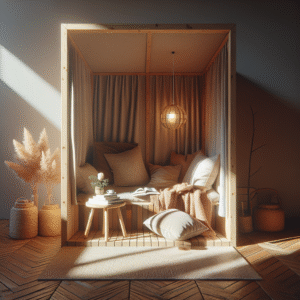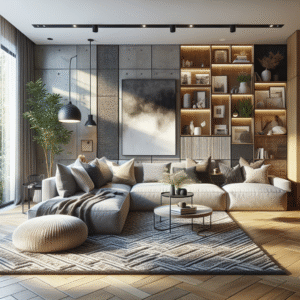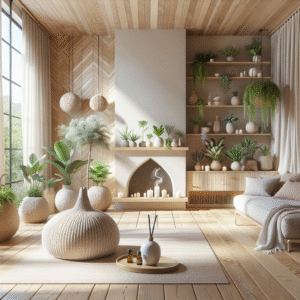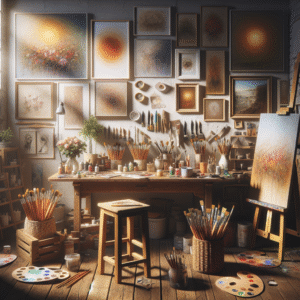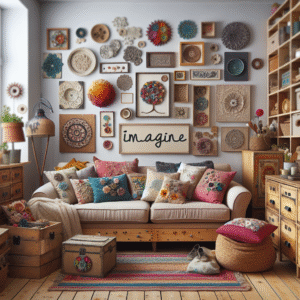Opening Section
Have you ever walked into a room and felt an instant connection, where textures and colors danced together in perfect harmony? That captivating effect often comes from an artful technique known as pattern mixing. Integrating diverse patterns in interior design is more than mere decoration; it’s about creating an environment that reflects personality and style. However, this approach can seem daunting, especially when trying to achieve balance without chaos.
In this guide, we will explore the fascinating world of pattern mixing in eclectic spaces, breaking down its principles and providing actionable insights to help you master the art. By the end, you’ll have the knowledge and confidence to transform your space into a vibrant, stylish sanctuary.
What You’ll Learn:
- Key principles of pattern mixing.
- How to choose the right patterns and colors.
- Tips for layering textures.
- Practical case studies and expert insights.
- An inspiring FAQ section answering common questions about eclectic decorating.
Let’s dive deep into the fascinating realm of pattern mixing in eclectic spaces!
H2: Understanding Pattern Mixing in Eclectic Spaces
H3: The Basics of Eclectic Design
Eclectic design celebrates individual expression by combining various styles, colors, and patterns. This approach defies conventional design rules, allowing creative freedom. Ultimately, the eclectic style focuses on uniting different aesthetics to form a cohesive look.
H3: The Importance of Patterns
Patterns are essential elements of a well-decorated room. They can evoke emotions, create focal points, and add dynamic interest. Common types of patterns include:
- Geometric: Lines and shapes create structure.
- Floral: Adds a touch of nature and softness.
- Stripes: Ideal for continuity, can be horizontal or vertical.
- Abstract: These designs introduce a modern or artistic flair.
H3: Color Theory and Patterns
Understanding how colors interact is key. For effective pattern mixing, consider using a color wheel. Complementary and analogous colors can help harmonize various patterns. For example, pairing a bold floral print with a subtle stripe can create a captivating balance.
H2: Key Principles of Pattern Mixing
H3: Start with One Statement Piece
Begin your design with a statement piece, such as a vibrant sofa or a bold art piece. From that focal point, select patterns and textures that enhance or complement it. This technique prevents visual chaos and provides a clear direction for your design.
H3: Limit the Color Palette
While the eclectic style encourages diversity, sticking to a limited color palette can create harmony. Aim for three to five colors and vary their intensity to enhance the overall aesthetic. Remember, neutral tones can tie bold patterns together effectively.
H3: Layering Textures
Mixing patterns also involves varying textures. Combine smooth fabrics with rough ones, such as silk cushions on a cotton sofa. This layering creates depth and interest, making the space feel more inviting.
H3: The 60-30-10 Rule
This classic design rule can guide your pattern mixing. Dedicate 60% of your room to a dominant color or pattern, 30% to a secondary one, and 10% for accents. This proportion helps maintain balance in your design.
H2: Choosing the Right Patterns
H3: Assess Your Space
Before diving into your design, consider the dimensions and light of your space. Smaller areas benefit from lighter colors and smaller patterns to avoid overwhelming visuals. Conversely, in spacious environments, bold patterns can add character.
H3: Personal Style and Preferences
Your design should reflect your tastes. Take cues from your favorite colors and patterns. Inspiration can come from textiles, artwork, or even nature. Create a mood board to curate your ideas visually.
H3: Consider Scale and Proportion
When mixing patterns, consider their scale. Pair larger patterns with smaller ones for contrast. For instance, a big floral couch can be paired with tiny geometric cushions to achieve a layered effect.
H2: Case Studies in Successful Pattern Mixing
H3: Urban Chic Apartment
In a New York City loft, an interior designer successfully used an over-sized geometric rug as the foundation, layering in various vintage floral prints on throw pillows and window treatments. This mix maintained a cohesive color palette, rooted in earthy tones with splashes of bold and vibrant hues, embodying a playful yet sophisticated feel.
H3: Cozy Cottage Retreat
In a rustic cottage, a designer embraced classic plaid wallpaper, enhanced with botanical prints on the fabric of upholstered chairs. The key here was the repetition of green shades, creating unity in diversity.
H2: Tools and Resources for Pattern Mixing
H3: Recommended Tools
- Mood Boards: Utilize software like Canva or Adobe Spark for creating mood boards that display potential design layouts.
- Color Palettes: Use tools like Coolors or Adobe Color for creating and testing color combinations.
- Online Resources: Websites such as Pinterest and Instagram can serve as invaluable platforms for inspiration and trends.
H3: Visual Content Suggestions
Consider incorporating infographics that demonstrate pattern mixing techniques. Charts showcasing color wheel relationships can also enhance understanding.
FAQ Section
What is pattern mixing in interior design?
Pattern mixing involves combining different designs, prints, and colors in a cohesive manner to create visual interest in interior spaces.
How can I start mixing patterns?
Begin with one statement piece, establish a color palette, and layer textures. Use the 60-30-10 rule to maintain balance.
Are there any patterns that should not be mixed?
While eclectic design encourages mixing, avoid clashing patterns, such as very similar scales or styles that compete for attention.
What colors work best for eclectic designs?
A balanced mix of complementary and analogous colors works well. Consider using neutrals to unify bolder patterns.
Can I mix different styles of furniture?
Yes! Mixing styles can enhance the eclectic feel. Ensure the color palette ties them together for harmony.
Conclusion & Next Steps
As you venture into the exciting world of pattern mixing in eclectic spaces, remember that creativity knows no bounds. Start with the principles we’ve discussed, utilize the tools available, and most importantly, let your personality shine through your design.
For more tips and inspiration, explore our related articles on color theory in interior design and layering textiles for a polished look.
Now, it’s your turn! What patterns are you excited to mix in your space? Share your thoughts in the comments below!
Content Disclaimer
The information provided in this article is for educational purposes only and should not be considered professional design advice. Always consult a qualified interior designer for specific concerns regarding design and decor.
Categories
- Accent Walls & Ceilings (13)
- Art Curation & Gallery (28)
- Bedding Style Trends (41)
- Bedroom Makeover (33)
- Bohemian & Eclectic Styles (13)
- DIY & Budget-Friendly Decor (12)
- Eco-Friendly Design (13)
- Furniture Care (32)
- Home Decor & Design Ideas (102)
- Home Wellness Spaces (13)
- Integrated Outdoor Living (12)
- Kids and Nursery Decor (13)
- Living Room Decor (33)
- Minimalist & Japandi Style (16)
- Mix & Match Techniques (32)
- Modern & Contemporary Design (12)
- Rug Sizing & Placement (32)
- Seasonal Home Decor (35)
- Small Space Solutions (17)
- Wall Art & Painting Tips (35)
Recent Posts
Recent Comments
Archives
Product Gallery
-
 Large Area Green Rugs for Bedroom Nordic Living Room Decoration Shaped Carpet Irregular Plush Lounge Rug Home Thick Washable Mat Rated 5.00 out of 5$57.07 – $359.83Price range: $57.07 through $359.83
Large Area Green Rugs for Bedroom Nordic Living Room Decoration Shaped Carpet Irregular Plush Lounge Rug Home Thick Washable Mat Rated 5.00 out of 5$57.07 – $359.83Price range: $57.07 through $359.83 -
 Nordic Style Rugs for Bedroom Morandi Living Room Decoration Carpet Large Area Geometry Lounge Rug Home Cloakroom Non-slip Mat Rated 5.00 out of 5$40.98 – $620.81Price range: $40.98 through $620.81
Nordic Style Rugs for Bedroom Morandi Living Room Decoration Carpet Large Area Geometry Lounge Rug Home Cloakroom Non-slip Mat Rated 5.00 out of 5$40.98 – $620.81Price range: $40.98 through $620.81 -
 Irregular Shapes Living Room Decoration Carpet Modern Style Rugs for Bedroom Home Thicken Plush Rug Fluffy Soft Lounge Floor Mat Rated 4.75 out of 5$58.00 – $360.83Price range: $58.00 through $360.83
Irregular Shapes Living Room Decoration Carpet Modern Style Rugs for Bedroom Home Thicken Plush Rug Fluffy Soft Lounge Floor Mat Rated 4.75 out of 5$58.00 – $360.83Price range: $58.00 through $360.83





